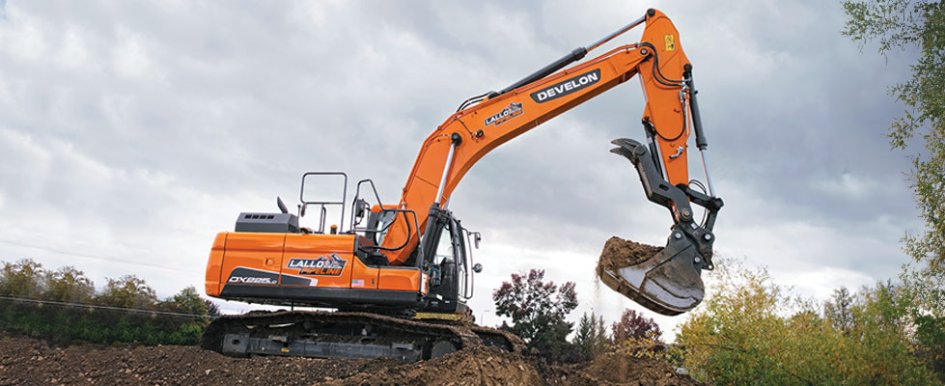
On today’s increasingly complex jobsites, the importance of selecting the right attachments for construction equipment can’t be overstated.
Opting for manufacturer-branded attachments that complement your equipment can make all the difference in expanding your machine’s capabilities and helping you accomplish tasks on time and within budget. However, specifying attachments for excavators and wheel loaders is far from a one-size-fits-all approach. It requires a detailed understanding of project requirements, equipment compatibility, safety considerations and maintenance requirements.
We’ll help answer your key questions so you can make better decisions that help optimize your equipment’s performance, enhance project outcomes and ensure the safety of others on your jobsites.
How Do Jobsites Impact Attachment Selection?
Jobsite requirements play a significant role in determining the appropriate attachments for construction equipment. Analyze each project’s unique needs to determine which attachment will best suit the application. A site that involves excavation may require buckets or hydraulic breakers. On the other hand, a project focused on moving materials might benefit from attachments like pallet forks and grapple buckets for wheel loaders. Additionally, the size and layout of the site can influence attachment selection. Confined spaces may require compact or maneuverable machines and attachments to move more efficiently.
Evaluating the attachment performance is critical to meeting the demands of the site. For example, when selecting an excavator bucket, look at bucket capacity, digging force and material density to determine its suitability. Similarly, when choosing a hydraulic breaker for demolition work, factors such as impact, frequency and compatibility with the machine’s hydraulic system are crucial to understand.
Is the Attachment Compatible With My Equipment?
To determine compatibility, identify the make and model of your machine and compare it against the specifications provided by the attachment manufacturer. This includes verifying the attachment’s compatibility with the equipment’s hydraulic system — ensuring that hydraulic flow rates, pressure ratings and connection points align. Make sure the attachment is properly sized and within the weight limits of your equipment to prevent strain, imbalance or damage during operation. Also, look at any specific mounting configurations, interface systems and compatibility with electronic control systems.
Review the manufacturer’s maintenance manual to make sure the equipment and attachment are compatible. The manual serves as a primary guide for proper heavy construction equipment operation and maintenance, and it is provided upon machine delivery from your local dealership. The manual can be kept in the machine’s cab for quick reference. An electronic copy, such as a PDF, may be available on a smartphone or tablet for easy access.
In recent years, wheel excavator adoption in North America has increased. More companies are finding wheel excavators to be useful for work that requires traveling on finished surfaces like concrete and asphalt. Wheel excavators can also operate mowing or brush-clearing attachments along roadway shoulders, making it easier for operators to clear the vegetation.
What Are the Safety Considerations?
Selecting attachments that prioritize operator and worker safety is essential for your long-term success. A few considerations include:
- Guarding and protection — Attachments should be equipped with appropriate guarding and protective measures to prevent contact with moving parts, pinch points or hazardous areas.
- Load capacity and stability — Attachments should be compatible with the equipment’s load capacity and stability requirements. Overloading attachments or operating equipment beyond its stability limits can lead to rollovers or other accidents.
- Hydraulic system safety — Hydraulic attachments should be properly connected and secured to prevent leaks, hose ruptures or other hydraulic system failures. Regular inspection and maintenance of hydraulic components are essential to ensure safe operation.
- Attachment engagement and disengagement — Implement safety procedures for engaging and disengaging attachments, including proper positioning, secure attachment connections and verification of locking mechanisms.
- Site-specific hazards — Identify elements that may pose risks to your equipment operators or bystanders. These may include uneven terrain, overhead obstacles or underground utilities.
Implement training and awareness programs to ensure that your operators understand the use of attachments. Additionally, attachments should comply with all relevant safety standards.
Should I Visually Inspect Attachments?
Before you use an attachment, inspect it to ensure safe and effective operation. You will be able to identify any signs of wear, damage or defects that may compromise its integrity or performance.
If the attachment has maintenance points, such as grease or pivot points, they should be properly greased according to the maintenance manual. Also, keep them as clean as possible, especially when working in dirty or dusty conditions, to prevent corrosion.
Where Can I Get Local Support?
Your local dealership can make sure an attachment complements your equipment, and they can provide hands-on equipment training. Service technicians have the product knowledge and experience to help you adhere to preventive maintenance intervals and help troubleshoot potential issues. They understand and can articulate recent technology updates, provide demonstrations and show you how to get the best performance from your attachment and machine.
Hydraulic Quick Couplers & Tiltrotator Accessories
Hydraulic quick couplers are vital attachments for excavators and wheel loaders, helping operators perform swift attachment changes. Tips for using hydraulic quick couplers include proper installation, regular inspection and compatibility checks to ensure safe and efficient operation. Operators should receive training and adhere to safety protocols for engaging and disengaging couplers.
Tiltrotator accessories are emerging in popularity, giving excavators enhanced maneuverability and productivity. For example, excavator operators can rotate or tilt attachments using the tiltrotator accessory, which can increase efficiency. Understanding their functionality, evaluating benefits and providing specialized training will help you make the most of their capabilities. Collaborate with your local dealer to train your excavator operators on how to use this accessory.
Both attachments enhance efficiency, safety and versatility on the jobsite.
